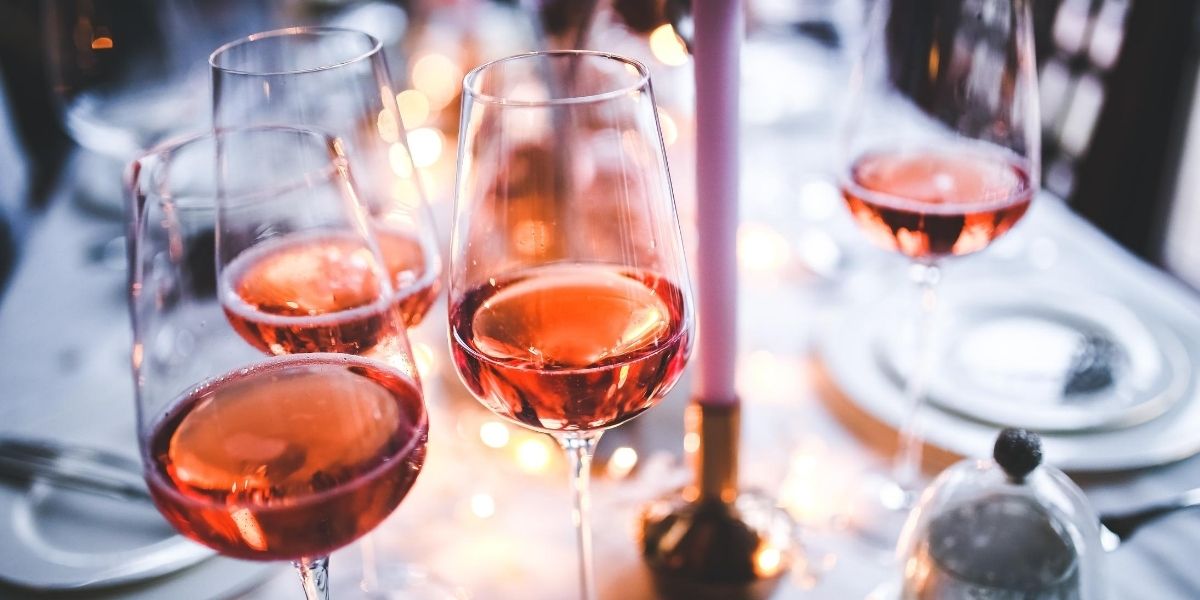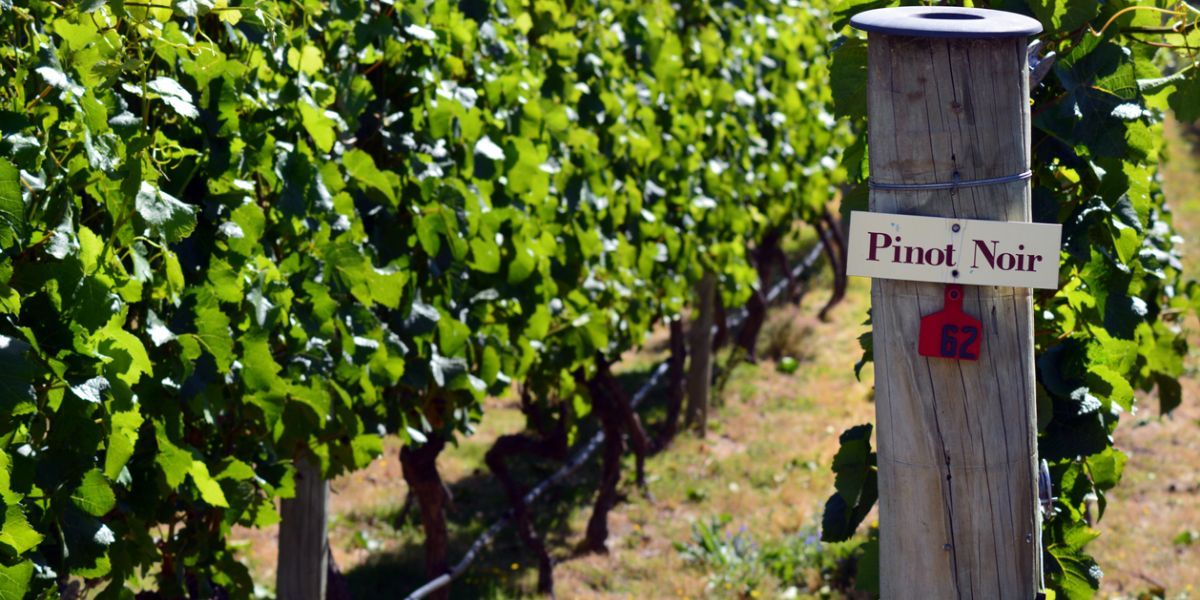Misconception Is Such Sweet Sorrow
DESPITE RIESLING'S MANY WONDROUS ATTRIBUTES, it is sadly still a greatly misunderstood wine. Many New World wine lovers have the misconception that all Rieslings are sweet, while others simply state that they have an unequivocal aversion to Riesling. There are some explanations for these negative impressions.
Many memories linger from the 1970s and 1980s when U.S. consumers’ experience with German wines was dominated by mediocre, semisweet Liebfraumilch, represented by certain mass-produced and heavily advertised brands. These wines were widely distributed (U.S. volume in the mid-1980s hit 1.5 million cases… nearly unparalleled case totals for that era). The truth is that the wines contained little, if any, Riesling and were composed primarily of high yielding, less distinctive grapes like Sylvaner and Müller-Thurgau. Apart from tarnishing the name of the noblest white grape of them all, the wines conditioned many to expect a very circumscribed experience from German wine and, by extension, Riesling—one of relative simplicity and sweetness, lacking balance and a true sense of place or terroir.
Ironically it can be argued that of all white grape varieties, it is Riesling which most purely expresses the qualities of balance and terroir. A tragic consequence of the great misconception that had grown up around Riesling—essentially, guilt by association—is that many true connoisseurs and lovers and admirers of terroir still are unaware of Riesling’s great potential to express terroir and to age magnificently.
It’s also important to remember that while, yes, there have been wretchedly sweet Rieslings, these wines are generally not wretched because they are sweet, but rather because their sweetness is not balanced by a correspondingly high degree of acidity. Since Riesling naturally possesses an extremely high level of acidity, especially those examples grown in the coolest climates, a skilled winemaker can allow for the most felicitous and harmonic sugar/acid balance.
Gewurtz Power
A few weeks ago we did a blind tasting internally of our own 2016 Gewurztraminer against our competition. The high quality of our own wine against our competition was really a nice morale booster. I believe we have mastered Gewurztraminer winemaking like few have: our wine is aromatic and intense, but not monodirectional, it is not too dry but also not sweet – the balance and complexity of our Gewurztraminer is just incredible.
And I don’t think we are the only one to notice that truth: Wine Spectator has rated our Gewurzt as the top Washington Gewurzt since 2009 with 90 points in 2015 and 90 points in 2013 (the 2016 is not rated yet) AND Wine Enthusiast magazine is often rating our Gewurztraminer 90 points and above. I would attribute our success with this variety to three factors.
First, as a winemaking team, we are in tune with northern Europeans aromatic white wines – those wines talk to us and we have the right sensibility to make those styles - we love the tension between intense aromatics and a hint of residual sugar for example.
Second, we get our Gewurztraminer grapes from a cooler north facing Yakima Valley (in the Snipes Mountain AVA precisely) vineyard. The Ramos vineyard, as it is called, does not ripen too fast which allows for the full aromatic development of the Gewurztraminer bouquet.
Third we do an overnight skin contact and shy away from correcting the high pH of Gewurztraminer which together tend to intensify the varietal aromas of this exuberant variety. Gewurztraminer is one of the most aromatic and distinct wine grape variety in the world often displaying aromas of lychee,
Turkish delight and tropical fruit. The grapes are a lovely pink color and the resulting wine always seems a little coppery in the glass. The combination of the exuberant aromatics and the slight coppery tinge makes Gewurztraminer very different from any other white wine. Gewurztraminer is an early ripener that needs some hang time to develop its full aromatic potential which often leads to late picking, itself leading to high alcohol levels and low acidities.
Alsace is where most of the Gewurztraminer vines are planted and about one fifth of the region’s area is dedicated to the variety. It is made there in all sort of styles but is most commonly found as a dry style – lucky are the consumers finding Vendanges
Tardives or Selection de Grains Noble sweet styles from Alsace. Outside Alsace the main region growing Gewurzt would be in California (about half the acreage found in Alsace) and apart from Alsace and California many regions throughout the world grow a small amount of it including Washington State.
Gewurztraminer is a treat with complex aromatic food and for that reason is often recommended with Indian cuisine and curries or for the Thanksgiving smorgasbord American dinner. While I like those combinations I also love Gewurztraminer with stinky French cheeses or with seafood tacos.
Give a try to Gewurztraminer. Our Ramos vineyard is barely off dry and will offer you an intense sensory experience as well as a delicious point of conversation with friends.
Selected Mosel VDP Erste Sage Vineyards
Selected Mosel VDP “Erste Lage” Vineyards
| Parish West – East | Erste Lage VDP Vineyards* | Key Producers |
|---|---|---|
| Lteiwen | Laurentiuslay | Sankt Urbans-Hof , Carl Loewen |
| Trittenheim | Apotheke | Grans Fassian, Ansgar Clusserath |
| Drohn | Hofberger | Ansgar Clusserath, A.J. Adam |
| Piesport | Domherr | Reinhold Haart, Von Kesselstatt |
| Piesport | Goldtröpfchen | Reinhold Haart, Sankt Urbans-Hof |
| Brauneberg | Juffer-Sonnenuhr | Max Richter, Fritz Haag, Thanisch, Peter Nicolay |
| Lieser | Niederberg Helden | Schloss Lieser |
| Bernkastel | Badstube | Peter Nicolay, Thanisch, Loosen, J.J. Prüm, Selbach Oster |
| Bernkastel | Doctor | Thanisch, Wegeler Erben, Von Kesselstatte |
| Graach | Himmelreich | Dr. Loosen, J.J. Prüm, Willi Schaefer, ?Peter Nicolay, Kerpen |
| Graach | Domprobst | Thanisch, Selbach-Oster, Willi Schaefer, Markus Molitor, Max Richter, Kerpen, S.A. Prüm |
| Wehlen | Sonnenuhr | SA Prum, Dr. Loosen, Willi Schaefer, Selbach-Oster, Wegeler Erben, Markus Molitor, Peter Nicolay, J.J. Prüm, Max Richter, Meulenhof, Kerpen |
| Zeltingen | Sonnenuhr | Selbach-Oster, Markus Molitor, J.J. Prüm |
| Ürzig | Würzgarten | Dr. Loosen, Markus Molitor, J.J. Christoffel, Merkelbach |
| Erden | Treppchen | Dr. Loosen, J.J. Christoffel, Peter Nicolay, Meulenhof, Merkelbach, Monchoff, Schmitges |
| Erden | Prälat | Dr. Loosen, J.J. Christoffel, Moncchon |
| Punderich | Erste Lage | Clemens Busch , Markus Molitor |
*Erste Lage: Great Vineyards that can be regulated by the VDP (Verband Deutscher Prädikatsweingüter), which is an association of German wine producers.
Sweet Wines for Beginners
If you are wondering about sweet wines for beginners, don’t be turned off by the seemingly daunting nature of the wine world. Enjoying wine doesn’t have to be difficult - it’s just about finding wines that taste good to you! You just need to know a bit about what’s out there.

For many beginners, the ability to differentiate between a sweet wine and a fruity wine just isn’t there… Yet! Many of us have been equating sweet and fruity wines wrongfully, or we have thought it difficult to understand the terms used to determine the different types of wine. Not to worry: this isn’t a judgment. It’s a learning opportunity - and an opportunity to sample some delicious wines.
Sweet Wines Decoded
Allow us to decode sweet wines for beginners. Sweet wine refers to the actual level of sugar in the wine after the fermentation process is complete. Sweetness is impacted by the type of grapes used and the length of the fermentation process. After fermentation, a wine with more than 20 sugar calories per glass (35 g/L RS) from the grapes is what we call a “sweet wine.”
About Sweet Pink Wines
These wines come in different varietals, including sweet pink wines. Rosé is a favorite pink wine for many, but people often mistake fruity rosés for sweet pink wines. Since rosé is made with such a broad range of grape varietals, the fermentation process is your best clue to sweetness. In other words, rosé isn’t always a “sweet” wine (but we think it’s always a great choice!).
If you’re a beginner, sweet pink wines are a fantastic place to start! Try a bottle of Pink Moscato or White Zinfandel. Both can be enjoyed with dessert or anytime by anyone from beginner wine drinkers to experienced enthusiasts. If you want to add a bit of intrigue, try a Pacific Rim Ice Wine Riesling. It’s a sweet white, and it makes the perfect treat for after dinner.
Explore! There’s a whole wide world of wine waiting for you.
Viniculture vs. Viticulture: What's the Difference?
Viniculture vs. viticulture? What do these terms refer to and how do we understand the difference? The scientific term “viticulture” refers to the science, study and production of grapes. The term “viniculture” also refers to the science, study and production of grapes. However, when we hear viniculture we know the process is referring specifically to grapes for wine.

Though technically defined as being the process cultivation of grapevines for winemaking, viniculture in popular use can often be referring to the process of making the wine itself, whereas viticulture would be used to refer to the process of growing the grapes. To confuse matters a bit more, the person who is, for example, growing Pinot Noir wine grapes, is called a viticulturist.
If you heard the terms viniculture or viticulture it’s likely you have heard them used interchangeably. You could even consider viniculture as a term under the larger umbrella of viniculture, since the latter refers more broadly to the science, study and production of grapes. Viticulture is the science and agriculture of growing grapes, whether that is table grapes or juice grapes. However, with viniculture, those grapes are headed for winemakers!
A simple device to remember viniculture vs. viticulture is to use the first three letters of viniculture to identify it as relating to vino!
Viniculture and viticulture aside, you already know that Pinot Noir is a wonderfully versatile and desirable varietal. Pinot Noir grapes produce excellent red wines, white wines and sparkling wines. Growing Pinot Noir wine grapes requires a vast knowledge and a commitment to purity, precision and perfection. The standard for Pinot Noir tends to be very high and it is known as one of, or perhaps even the most, challenging wine varietals to grow.
Next time you are shopping for a bottle of Pinot Noir it may be a fun challenge to research the brands in your local shops or frequented online sellers to find out a bit about their own process for viniculture.